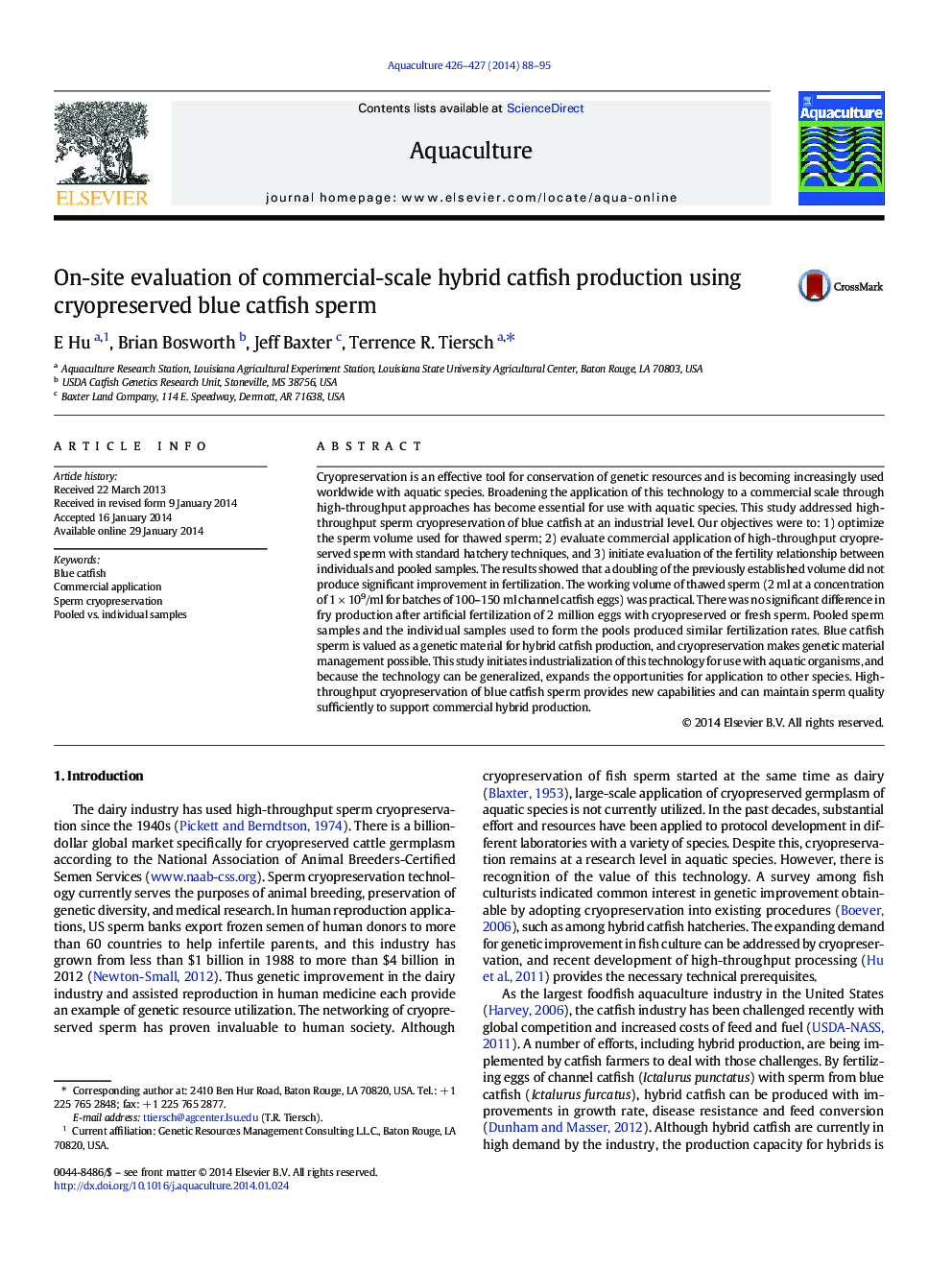| Article ID | Journal | Published Year | Pages | File Type |
|---|---|---|---|---|
| 8495141 | Aquaculture | 2014 | 8 Pages |
Abstract
Cryopreservation is an effective tool for conservation of genetic resources and is becoming increasingly used worldwide with aquatic species. Broadening the application of this technology to a commercial scale through high-throughput approaches has become essential for use with aquatic species. This study addressed high-throughput sperm cryopreservation of blue catfish at an industrial level. Our objectives were to: 1) optimize the sperm volume used for thawed sperm; 2) evaluate commercial application of high-throughput cryopreserved sperm with standard hatchery techniques, and 3) initiate evaluation of the fertility relationship between individuals and pooled samples. The results showed that a doubling of the previously established volume did not produce significant improvement in fertilization. The working volume of thawed sperm (2Â ml at a concentration of 1Â ÃÂ 109/ml for batches of 100-150Â ml channel catfish eggs) was practical. There was no significant difference in fry production after artificial fertilization of 2Â million eggs with cryopreserved or fresh sperm. Pooled sperm samples and the individual samples used to form the pools produced similar fertilization rates. Blue catfish sperm is valued as a genetic material for hybrid catfish production, and cryopreservation makes genetic material management possible. This study initiates industrialization of this technology for use with aquatic organisms, and because the technology can be generalized, expands the opportunities for application to other species. High-throughput cryopreservation of blue catfish sperm provides new capabilities and can maintain sperm quality sufficiently to support commercial hybrid production.
Related Topics
Life Sciences
Agricultural and Biological Sciences
Aquatic Science
Authors
E Hu, Brian Bosworth, Jeff Baxter, Terrence R. Tiersch,
